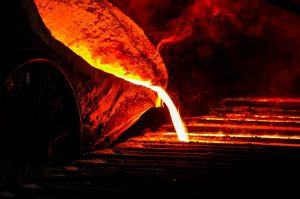
With a tensile strength that’s roughly 1,000 times stronger than iron, steel has become one of the world’s most important metals. It’s used to make everything from bridges and automobiles to nuts, bolts and even gardening tools. Unbeknownst to many people, however, steel is also a key ingredient in the construction of permanent magnets. Being that steel itself isn’t magnetic, you might be wondering why manufacturers use it to make permanent magnets.
What Is a Permanent Magnet?
Also known as a hard magnet, a permanent magnet is an object with a persistent magnetic field. In other words, it’s a magnet that doesn’t lose its magnetic strength. Even after years of use, a permanent magnet will be just as strong as the day when it was manufactured. This is in stark contrast to temporary magnets, which do lose their magnetic strength.
A common example of a permanent magnet is a refrigerator. Refrigerators are typically designed with permanent magnets to minimize the loss of cool air. During the mid-1900s, manufacturers discovered that by embedding permanent magnets in the doors of refrigerators, the appliances were less likely to leak cool air. In comparison, paperclips are considered temporary magnets. When a magnet is applied to a paperclip, the paperclip itself will become magnetic. Of course, this magnetic field is only temporary, and the paperclips will eventually no longer attract to other ferromagnetic objects.
The Use of Steel in Permanent Magnets
So, why do manufacturers use steel to make permanent magnets? Going back to the basics of this metal, steel is an alloy consisting of iron and carbon. In its natural state, steel isn’t magnetic, but it can be modified in a way that turns it magnetic.
When a nonmagnetic piece of steel is applied to a magnet, the atoms within it rearrange themselves in a manner that creates a permanent magnet. As the atoms become aligned, they create a magnetic field that doesn’t lose its strength. In order to create a magnetic field, an object’s atoms must be properly oriented. Steel is highly effective for this purpose because of the natural positioning of its atoms.
Steel isn’t the only material used to make permanent magnets. Permanent magnets are also made of ceramic, iron, cobalt, nickel, gadolinium and neodymium. With that said, steel is a relatively inexpensive and widely available material, even more so than the aforementioned materials. For these reasons, many manufacturers prefer using steel in the construction of permanent magnets.
No tags for this post.